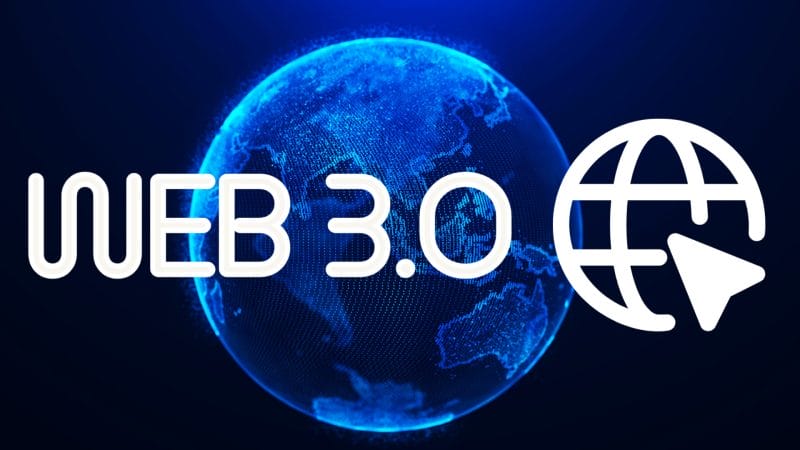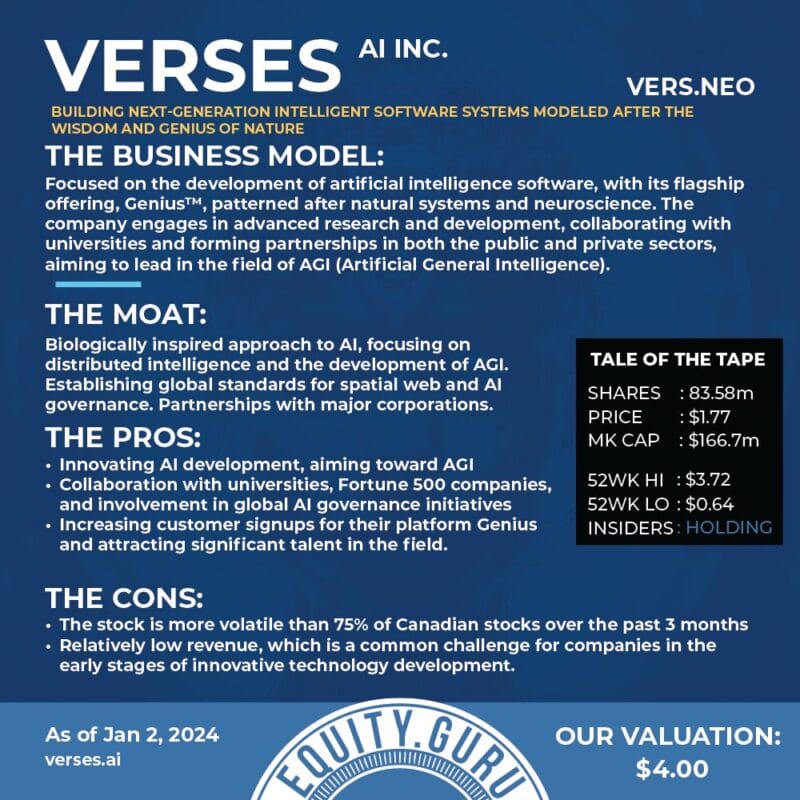Futuristic Shock & Awe
As a kid, we all grew up fantasizing about the day we could finally immerse ourselves in a virtual world. Movies like Ready Player One or shows like Sword Art Online popularized the idea of making reality our own through the use of technology. Today, the same tools we dreamt about are now in the palm of our hands. This includes non-immersive, semi-immersive, and fully-immersive Virtual Reality (VR).
In addition to letting us live out our virtual fantasies, whatever that includes, VR is used in a variety of fields, including education, retail, and business. With this in mind, there are many applications for VR beyond entertainment. Overall, the global VR market was valued at USD$21.83 billion in 2021 and is expected to expand at a compound annual growth rate (CAGR) of 15% between 2022 and 2030.
However, VR is just one of the many surreal technological advancements made in recent years. We now stand on the precipice of the Internet of Things (IoT), blockchain, robotics, and 5G, ushering in a new era of technological immersion. IoT is particularly interesting for a few reasons. For context, IoT refers to a system of devices connected through the internet, such as smartphones and computers.
Generally speaking, an IoT device is defined as a stand-alone device that is connected to the internet and can be controlled or monitored from a remote location. These devices are then able to connect and exchange data with each other over the internet. With this in mind, there will be more than 64 billion IoT devices installed around the world by 2026, according to Insider Intelligence.
Similar to VR, IoT spans numerous industries, ranging from manufacturing to hospitality. Some of the largest IoT platforms in the world include Amazon Web Services, Microsoft Azure, and the Oracle Integrated Cloud. A few of the most popular examples of IoT devices are Google Home, smart light switches, and doorbell cameras. While different, these devices have one thing in common.
The World Wide Web
The internet. The internet, or the World Wide Web (WWW), is an umbrella term referring to Web 1.0, Web 2.0, and Web 3.0. For the sake of relevancy, let’s talk about Web 2.0. Web 2.0 refers to websites that focus on user-generated content, ease of use, participatory culture, and interoperability. Similar to IoT, Web 2.0 interoperability seeks to provide user compatibility with other products, systems, and devices.
While Web 2.0 allows for content viewing and creation, Web 1.0 was almost entirely used for content viewing. That being said, the defining characteristic of Web 2.0 is interactivity. Through various social media and content creation platforms, such as WordPress, Tik Tok, and Twitter, users are able to create, share, and interact with content, be it their own or someone else’s.
Via Web 2.0, data can also be readily shared through a variety of mediums and applications. From a business perspective, data is a goldmine for Web 2.0 companies. These companies are able to track certain user statistics like locations, identity, and product preference. Naturally, you would assume this data belongs to the user, however, this isn’t always true.
“Many people increasingly feel as if they are under a digitally-enhanced microscope that routinely tracks their most basic desires, and then targets these to make their fulfillment easier, more efficient, and more effective—whether they want that or not,” wrote Gabriel René and Dan Mapes.
For example, not too long ago Facebook found itself in hot water following a data-sharing scandal. According to the New York Times, Facebook had been sharing users’ data with other tech firms, including Amazon, Apple, Microsoft, Netflix, and Spotify, among others. While companies like Facebook do not directly sell user data, they can use it for targeted advertising.
This creates opportunities for advertisers to pay to show up on a user’s front page. Similarly, Twitter recently agreed to pay $150 million to the Federal Trade Commission for a “privacy incident.” According to details, Twitter had used user contact information to assist advertisers in reaching their preferred audiences.
What Is the Solution?

User data shared by Twitter included email addresses and phone numbers, which were originally submitted by users for security purposes. With this in mind, Web 3.0 is intended to put control back into users’ hands, with a focus on decentralization, openness, and utility. Unlike Web 2.0, data generated by smartphones, desktops, and appliances will be sold by the users through networks.
This will ensure that users retain ownership over their data as opposed to large corporations holding a monopoly over user data. Other defining characteristics of Web 3.0 include trustless and permissionless access. Put simply, through Web 3.0, users can access and interact with networks without an intermediate or government authorization via “decentralized apps,” also referred to as dApps.
Unlike traditional Web 2.0 applications that rely on a centralized server, dApps run on the blockchain or decentralized peer-to-peer (P2P) network of computers. Furthermore, Web 3.0 will utilize Artificial Intelligence (AI) and machine learning to interpret information and gradually improve accuracy. In doing so, this will allow computers to produce faster and more relevant results, not just targeted ads.
Arguably the most interesting feature of Web 3.0 is its connectivity. With Web 3.0, the IoT can be expanded beyond its current limitations. Let’s take a look at “The Spatial Web: How Web 3.0 Will Connect Humans, Machines, and AI to Transform the Word,” a book written by Gabriel René and Dan Mapes. According to this book, Web 3.0 isn’t limited to IoT. Instead, it will embody the Internet of Everything.
Gabriel and Dan believe Web 3.0 will be capable of reporting details beyond what Web 2.0 is capable of. To them, Web 3.0 devices like a smart toilet would be able to determine the amount of fiber one has in their diet. The capabilities of Web 3.0 will expand well beyond the toilet, assisting professionals in the fields of healthcare, industrial, and business, to name just a few. However, Web 3.0 isn’t perfect.
VERSES Technologies Inc.

Web 3.0 is more of an idea than it is a concrete definition. With this in mind, if Web 3.0 is like a slab of marble, then VERSES Technologies Inc. is the sculptor. The Company provides enterprises, organizations, and governments with a suite of integrated technologies built on open standards developed by the Spatial Web Foundation. It should be noted that VERSES is not yet a publicly-traded company.
VERSES was founded by Gabriel René and Dan Mapes, the authors of “The Spatial Web.” To provide some background, the Spatial Web Foundation (SWF) is a non-profit organization developing protocols, standards, and specifications for Web 3.0, which the company refers to as the Spatial Web™.
The SWF defines the Spatial Web as a “hyper-integrated, contextually-aware, and ethically-aligned network of humans, machines, and AI. The Spatial Web will be characterized by values of privacy, security, trust, and interoperability. Standards associated with the Spatial Web include:
- Spatial Domains: similar to web domains but operate in three dimensions as opposed to two
- Distributed Ledger: capable of tracking value, identity, and location while preserving privacy and data
- Hyperspatial Language: programmable, automated, and self-executing software utilizing Spatial Contracts
- Hyperspatial Transaction Protocol (HSTP): similar to traditional HTTP, HSTP will allow users to traverse the Spatial Web
With this in mind, VERSES’ flagship product is its COSM™ operating system (OS), which is capable of “generating a unified intelligent network of data, policies, simulation models, and workflow automation that can be shared within and between organizations.” According to Gabriel René, VERSES plans to launch COSM globally in 2023.
Similar to Apple’s iOS, the Company will release the COSM Software Development Kit (SDK). However, COSM will not be limited to mobile applications. VERSES SDK will allow third-party developers to create their own applications for a variety of industries. One such application includes the Company’s Wayfinder, which VERSES compares to Waze, but for warehouses.
More specifically, Wayfinder is VERSES spatial networking technology. This application uses a spatial model of a warehouse to direct order pickers to an item’s exact location. Furthermore, Wayfinder’s hands-free picking and audio picking technology can result in substantially improved performance. Additional features of Wayfinder include:
- predictive slotting optimization
- smart replenishment
- dynamic routing
- and more…
VERSES is also part of an international multi-disciplinary team assisting the Flying Forward 2020 (FF20) consortium and ecosystem. The FF20 refers to a three-year collaborative research project aiming to develop a new Urban Air Ministry (UAM) in Europe. This project will focus on incorporating Urban Air Mobility within the spatial data infrastructure of cities.
Financials
As previously mentioned, VERSES is a private company, however, as of June 23, 2022, the Company received a receipt from the British Columbia Securities Commission for its Long Form Prospectus issued June 21, 2022. Bearing this in mind, the NEO Exchange (NEO) has conditionally approved the listing of VERSES Class A Subordinate Voting Shares of the Company on June 28, 2022, under the ticker VERS.
According to VERSES Financial Results for the years ended March 31, 2021, 2020, and 2019, the Company had a cash position of USD$136,172 as of March 31, 2021, compared to USD$4,348 on March 31, 2020. As of March 31, 2021, VERSES had total assets and total liabilities of USD$909,247 and USD$7,045,690, respectively. The Company’s revenue as of March 31, 2021, was USD$97,200.
In total, VERSES reported a net loss of USD$2,528,154, or $0.25 per share, on March 31, 2021, compared to a net loss of USD$1,826,314, or $0.18 per share, on March 31, 2020. Referring back to VERSES Class A Subordinate Voting Shares, in July 2021, the Company issued 20,000,000 special warrants pursuant to its private placement for gross proceeds of USD$12,817,106.
The special warrants were priced at CAD$0.80 each, with each special warrant entitling the holder to one unit upon exercise. Each unit was comprised of one Class A Subordinate Voting Share and one-half of one transferrable Class A Subordinate Voting Share purchase warrant.
Each of these warrants entitled the holder to acquire one Class A Subordinate Voting Share at an exercise price of $1.20 each, expiring 24 months from the date of issuance. More recently, on February 22, 2022, and March 3, 2022, 21,003,077 special warrants were converted into Class A Common Shares.
Full Disclosure: VERSES Technologies Inc. is a marketing client of Equity Guru.








